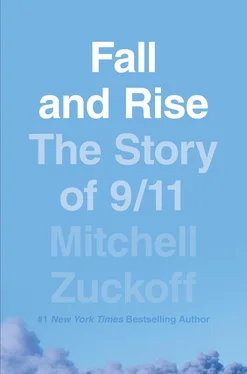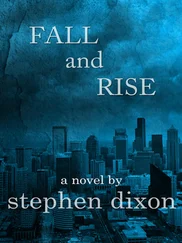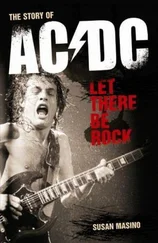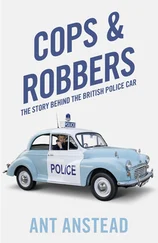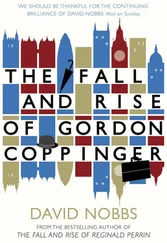Now Brian had to go.
“They are coming back,” he said. Brian told his mother goodbye as he hung up.
Louise Sweeney turned on the television.
AT NINE O’CLOCK, Peter Hanson called his parents’ home a second time from Flight 175.
“It’s getting bad, Dad,” Peter told his father, Lee. “A stewardess was stabbed. They seem to have knives and Mace.”
“They said they have a bomb. It’s getting very bad on the plane. Passengers are throwing up and getting sick.”
“The plane is making jerky movements. I don’t think the pilot is flying the plane. I think we are going down.”
“I think they intend to go to Chicago or someplace and fly into a building.”
Peter’s description of the hijackers’ weapons, claims, and tactics echoed the calls only minutes earlier from Betty Ong and Amy Sweeney on Flight 11.
Then, just as Brian Sweeney had tried to reassure his wife and mother, Peter Hanson sought to comfort his father: “Don’t worry, Dad. If it happens, it’ll be very fast.”
AT 9:01 A.M., as United Flight 175 rapidly descended, Peter Mulligan, a flight control manager at New York Center, told the FAA Command Center in Virginia: “We have several situations going on here. It’s escalating big, big time. We need to get the military involved with us.”
As it barreled toward the World Trade Center, already the scene of disaster from Flight 11’s crash, United Flight 175 looked as though it might hit the Statue of Liberty.
Air traffic controllers stared rapt at their screens, even as they continued to warn other nearby planes. Everything in their long years of training and experience channeled their minds toward the hope and expectation that hijacked planes would land and passengers would be held hostage until demands were met, or until the military either forced the hijackers to surrender or killed them. To the very last moments, some controllers held tight to the notion that the pilots were racing toward the nearest airport, beset by a routine mechanical or electrical emergency.
Reality overtook that fantasy.
United Airlines Flight 175 flew low and fast, banking toward the southern twin of the burning North Tower of the World Trade Center. Flight controllers, airline officials, government and military experts, and everyone else would need to accept a new script for hijackings, one that featured a multipronged murder-suicide plot designed to maximize civilian casualties and terrorize survivors through the destruction of physical and symbolic pillars of America’s power.
The evidence flashed on the air traffic controllers’ radar screens.
“No!” a New York controller shouted. “He’s not going to land. He’s going in!”
FROM THE BACK of the plane, with his wife and daughter pressed against him, Peter Hanson spoke his final words to his father: “Oh my God… . Oh my God, oh my God.”
Lee Hanson heard a woman shriek.
AT THAT MOMENT, a battalion of television and still cameras on the ground and in helicopters trained their lenses on Lower Manhattan. Every network joined CNN live on the air, yet still almost no one knew what was happening or what kind of planes were involved.
On ABC’s Good Morning America , the smoke-obscured North Tower filled the screen while hosts Diane Sawyer and Charles Gibson interviewed reporter Don Dahler on the scene. As Dahler described scores of fire crews and other first responders rushing toward the World Trade Center, a Boeing 767 zoomed into view on the right side of the screen.
At 9:03:11 a.m., Lee and Eunice Hanson, Louise Sweeney, and millions of others became witnesses to murder. They watched live on television as United Flight 175, traveling between 540 and 587 miles per hour, slammed on an angle into the 77th through 85th floors of the South Tower of the World Trade Center. A bright orange fireball exploded. The building rocked and belched smoke, glass, steel, and debris. The plane and everyone inside it disappeared forever.
In her kitchen, Eunice Hanson screamed.
In her television studio in New York, Diane Sawyer gasped, “Oh my God.”
“That looks like a second plane,” her colleague Charles Gibson said.
“That just exploded!” said reporter Don Dahler, still on the phone to the studio, his location preventing him from seeing the crash.
Gibson composed himself. On some level, every professional broadcaster feared becoming known for a histrionic narration of a terrible event, like the radio reporter who nearly fell apart while witnessing the crash of the German airship Hindenburg in 1937.
“We just saw another plane coming in from the side,” Gibson said soberly. “So this looks like it is some sort of a concerted effort to attack the World Trade Center that is under way.”
After replaying the video to be certain about what they’d seen, Gibson’s voice went slack.
“Oh, this is terrifying… . Awful.”
Sawyer spoke for Eunice and Lee Hanson, Louise Sweeney, and countless others who saw United Flight 175’s final seconds. “To watch powerless,” she said, “is a horror.”
THE TOLL WAS incalculable, just as it had been less than seventeen minutes earlier from the crash of American Flight 11. The immediate victims of United Flight 175 were two pilots, seven crew members, and fifty-one passengers, including three small children. All of them slaughtered in public view, preserved on film, by five al-Qaeda terrorists.
Two-year-old Christine Hanson and four-year-old Juliana McCourt would never visit Disneyland. Neither they nor David Gamboa-Brandhorst would know first days of school, first loves, or any other milestone, from triumph to heartbreak, of a full life. Andrea LeBlanc would never again travel the world with her gregarious, pacifist husband, Bob. Julie Sweeney wouldn’t bear children, grow old, and feel safe with her confident warrior husband, Brian.
Delayed passengers wouldn’t hear recitals of Forrest Gump dialogue from Captain Victor Saracini. First Officer Michael Horrocks’s daughter wouldn’t rise from bed with the promise that her daddy loved her to the moon. Ace Bailey and Mark Bavis would never again share their gifts with young hockey players or with their own families.
Retired nurse Touri Bolourchi, who’d fled Iran and the Ayatollah Khomeini, wouldn’t see her grandsons grow up as Americans. The Reverend Francis Grogan, who survived World War II on a Navy destroyer, would never again see his sister or comfort his flock. Flight attendants Alfred Marchand and Robert Fangman, who’d changed careers to fly, wouldn’t see the world or their loving families. Flight attendants Michael Tarrou and Amy King would never marry.
Lee and Eunice Hanson would never see Peter and Sue Kim fulfill their professional promise or expand their loving family with more children. Christine would never again visit “Namma’s house” or insist that her grandparents sing the correct words to Barney’s “I love you” song.
And still the day had just begun.
AT ALMOST PRECISELY the same time as United Flight 175 hit the South Tower, a Boston Center flight control manager named Terry Biggio reported to a New England FAA official that his team had deciphered the hijacker’s first accidental radio transmission from American Flight 11, spoken nearly forty minutes earlier.
Biggio said: “I’m gonna reconfirm with, with downstairs, but the, as far as the tape … [He] seemed to think the guy said that ‘We have planes.’ Now I don’t know if it was because it was the accent, or if there’s more than one, but I’m gonna … reconfirm that for you, and I’ll get back to you real quick. Okay?”
To be certain the message came across loud and clear, Biggio repeated himself and emphasized: “Planes, as in plural.”
Читать дальше
